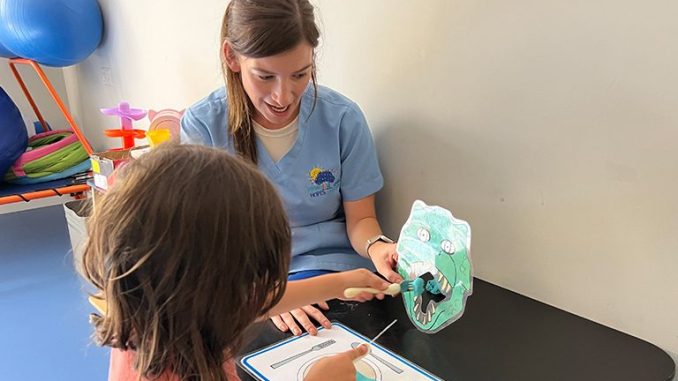
Occupational therapy plays a vital role in helping children overcome various physical, cognitive, emotional, and behavioral challenges. While there is no specific age limit for receiving this form of therapeutic intervention, some factors should be considered when determining if child occupational therapy is appropriate for your child. In general, child occupational therapy can benefit infants, toddlers, preschoolers, school-aged children, and adolescents facing developmental or functional hurdles.
Infancy (Birth – 12 Months):
Early detection and intervention are essential for promoting optimal growth and development during infancy. Parents and caregivers may notice signs indicating that their baby could benefit from occupational therapy, such as delayed milestones, abnormal muscle tone, or difficulty feeding or sleeping. Early childhood occupational therapists specialize in assessing and treating babies experiencing neuromotor, sensory, or feeding disorders. They collaborate with parents and healthcare professionals to design customized intervention plans aimed at improving the infant’s strength, mobility, and overall function.
Toddlerhood (1 – 3 Years):
During toddlerhood, children begin exploring their surroundings independently and developing foundational skills needed for later stages of life. Signs suggesting that a toddler might require occupational therapy include frequent falling, clumsiness, avoidance of particular textures or movement experiences, or struggles with dressing or toileting. Pediatric occupational therapists employ various creative methods, such as play-based activities, to nurture gross and fine motor skill development, sensory integration, and emerging self-help abilities.
Preschool age (3 – 5 Years):
By the time children enter preschool; they typically possess basic self-care and pre-academic skills but still require guidance and refinement. Red flags warranting consideration of occupational therapy for preschoolers encompass impaired dexterity, visual-motor coordination deficits, limited attention span, and problems interacting socially. Preschool occupational therapists concentrate on honing fine motor skills required for manipulating utensils, crayons, scissors, buttons, and zippers while nurturing gross motor proficiency via climbing, jumping, balancing, and throwing games. Additionally, they address sensory modulation concerns, executive functioning skills, and peer interactions.
School-age children (6 – 12 Years):
Elementary school years present additional demands regarding academics, sports, hobbies, and friendships. Concerning indicators suggestive of occupational therapy needs among school-age kids comprise below-average handwriting quality, illegible printing or cursive, sloppy artwork, diminished participation in team sports, reluctance toward craft projects, heightened stress levels, or unhealthy coping mechanisms. School-based occupational therapists assist students in mastering complex graphomotor tasks, organizing workspace and materials, managing homework load, optimizing visual perception, reinforcing ergonomically sound positions, and teaching relaxation techniques.